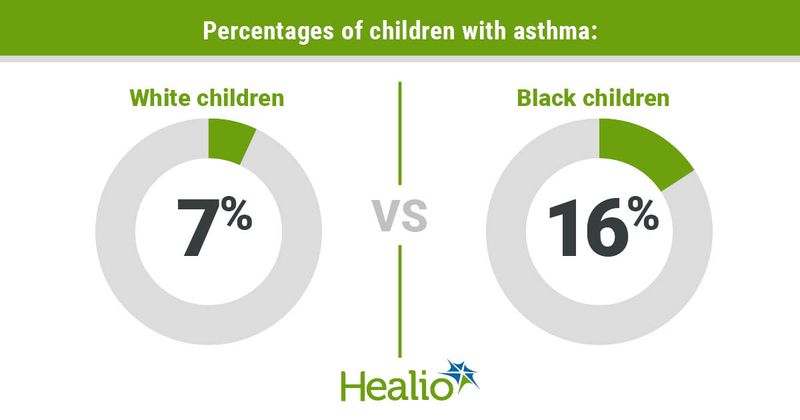Allergist-school partnership enables asthma treatment without grant money
A partnership between school-based health centers and local allergists provided sustainable and cost-neutral asthma care for students without relying on grants, according to a poster presentation.
Researchers of the project — presented at the American College of Allergy, Asthma & Immunology Annual Scientific Meeting — reviewed the operating costs of three school-based health centers (SBHCs) that partnered with an allergist to provide asthma care.

“Health care access in school decreases time away from school due to illness or appointments and should lead to decreased absences, improved performance and decreased dropout rates,” Katherine Rilett, MD, a PGY3 resident in internal medicine and pediatrics at Tulane University School of Medicine, said during the presentation.
Approximately one in 12 children has asthma, and about 50% of them will miss school each year due to their disease, Rilett said. Also, about 7% of white children and 16% of Black children have asthma, indicating significant ethnic and socioeconomic disparities, she added.
“Community-based asthma care, when employed in under-resourced communities, is an important component of a multimodal strategy for improving health disparities,” Rilett said.
Most models for community-based asthma treatment rely on grant funding to cover some or all of their operating costs, which presents problems when grant periods end and are not renewed, often to the detriment of the community, according to the researchers.
The researchers were involved in a partnership where a grant-funded allergist would rotate between SBHCs at two high schools and one combined high school and middle school, identifying and treating children with asthma at each school for a half-day each week.
The SBHCs had general consent for treatment via a treatment form that was distributed at the start of the school year. Also, the SBHCs had lists of students with asthma based on paperwork that the families had submitted. The allergist would document each visit in the school’s electronic medical record.
Each student’s insurance — Medicaid in most cases — was billed for the services, although underinsured children received free treatment. The SBHCs did not collect any copays.
But when the grant funding ran out, the partners agreed the program was valuable and that they didn’t want students to lose asthma care. So, they explored contracting the work. During the 6-month contract negotiation and approval process, the allergist continued to provide care for free.
The parties then agreed that the allergist would continue providing comprehensive asthma care a half-day each week for an hourly rate. This contract drove care between 2016 and 2020, and the researchers reviewed financial records at the end of the 2019 academic year.
“The results after reviewing these records show that the insurance reimbursements for E&M and CPT codes would have provided a completely cost-neutral system. Reimbursements equaled the hourly rate of the allergist,” Rilett said.
In this specific partnership, the cost of adding an allergist as a licensed EMR user yielded a small financial loss for the school system, but the researchers said the allergist’s free services for 6 months offset the loss.
“Partnership between an allergist and SBHCs can be a sustainable and cost-neutral community endeavor,” Rilett said. “Unfortunately, as we’re patting ourselves on the back for creating a grant-free sustainable community partnership, the COVID-19 pandemic muddied the waters.”
The 2020 shutdown forced the schools to shift their priorities as they moved to virtual models of learning. But now that schools are in session in person again, the researchers hope to relaunch the partnership.
“When we resume, we look forward to ascertaining how we can overcome the EMR fee and keep our partnership cost-neutral,” Rilett said.

